Seed Grants Awarded 2023
Polymeric characterization of intrinsically disordered tau protein: towards a molecular understanding of aggregation in prion like proteins
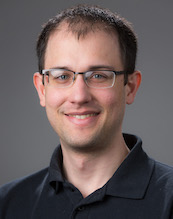 |
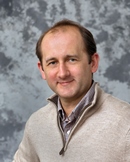 |
| Christian Aponte-Rivera SBU, Chemistry |
Dmytro Nykpanchuk BNL, CFN |
Abstract:
Prion diseases are transmissible, neurodegenerative diseases associated with the aggregation of intrinsically disordered proteins (IDPs), i.e., proteins that behave like flexible polymers in their healthy state. Strategic preparedness to such diseases thus requires fundamental advances that provide insight on how sequence determined molecular interactions control the thermodynamic and structural properties of IDPs. The IDP tau protein, associated with Alzheimer’s disease and other tauopathies, undergoes prion like aggregation, and recent studies highlight the importance of electrostatic interactions in such processes. However, how intermolecular interactions determine whether tau protein aggregates or remains in its healthy state is not well understood. A significant roadblock in understanding these processes is that a self-consistent model of tau protein connecting sequence defined molecular interactions to thermodynamic properties has not been developed. Such a model would be an important tool to predict tau protein properties and guide the development of drug treatments and diagnostic tools.
In this proposal, we aim to develop a self-consistent model of tau protein electrostatic interactions at biologically relevant pH and salt concentrations. This will be accomplished through a combination of scattering experiments, coarse-grained molecular dynamic simulations, and scaling theory. The combined approach will result in a predictive model determining the role of electrostatic interactions on tau protein polymeric structure at physiological conditions. Furthermore, the work will be an important step towards developing a model that accounts for the different intramolecular interactions determining the properties of tau protein.
Hybrid Quantum Algorithm for Parabolic and Elliptic Partial Differential Equations in Electrophysiology
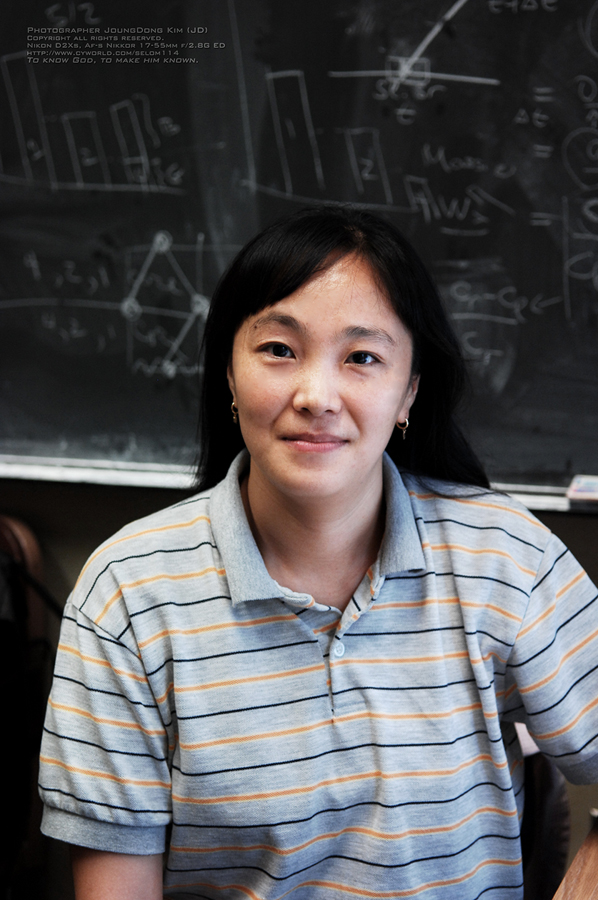 |
 |
|
Hyun-Kyung Lim |
Kwangmin Yu BNL, Computational Science Initiative |
Abstract:
In the past few years, companies such as Google, IBM, IonQ, Quantinuum, and Rigetti have achieved remarkable advancements in the development of quantum computers. A number of companies have now launched quantum computers with around 50 qubits, with IBM leading the way with a 433-qubit quantum computer - the largest number of qubits currently available. Despite the fact that the accuracy of quantum computers is dependent on the implementation technique of the Noisy-Intermediate Scale Quantum (NISQ) hardware, such as superconducting or trapped ion, regardless of their architecture, they are prone to various noises, errors, and decoherence. Contemporary quantum devices are restricted in their ability to produce dependable results for practical computing problems. Despite vendors releasing more advanced quantum computers with higher Quantum Volume, which is a means of quantifying a quantum device’s computational power, these devices are still a long way from achieving quantum supremacy for practical problems. Moreover, the attainment of fault-tolerant quantum computers is currently unfeasible and may remain for several decades. Consequently, it is imperative to maximize the utilization of NISQ devices to gain a quantum advantage on such devices. To optimize the utilization of NISQ devices, various methods have been proposed. Variational Quantum Algorithms (VQAs), including Quantum Approximate Optimization Algorithm (QAOA), Variation Quantum Eigensolver (VQE), and Quantum Neural Networks, have gained significant attention as potential approaches to achieve quantum advantage on Noisy Intermediate-Scale Quantum (NISQ) devices. Therefore, we propose to develop a variation and quantum-classical hybrid algorithm on NISQ devices to solve the partial differential equations in electrophysiology, representing the cardiac tissue as overlapping intracellular and extracellular domains, as is needed in defibrillation modeling.
Analysis of Francisella tularenis membrane-derived structures and host-pathogen interactions using cryo-electron tomography
 |
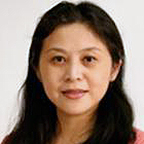 |
| David Thanassi SBU, Microbiology and Immunology |
Liguo Wang BNL, Lab for BioMolecular Structure, NSLS II |
Abstract:
Francisella tularensis is an intracellular bacterial pathogen that causes the zoonotic disease tularemia. F. tularensis is highly virulent and easily transmitted to humans when aerosolized. Inhalation of even small doses of bacteria results in a severe pneumonia with high rates of morbidity and mortality. The molecular basis for the high infectivity, virulence, and intracellular pathogenesis of F. tularensis is not well understood. To interfere with host immune responses, intracellular bacteria typically secrete virulence factors that target host pathways. However, secretion systems and effector proteins used by F. tularensis to modulate host responses are poorly understood. To address this gap in knowledge, we have characterized the production of novel tubular structures by Francisella as potential systems for interaction with host cells and delivery of virulence factors. Based on our published and preliminary findings, we hypothesize that F. tularensis responds to specific signals during host cell infection to upregulate tube production, using a novel cytoplasmic machinery that creates extensions of both the bacterial inner and outer membranes, and that these tubes interact with the host to facilitate pathogenesis. To address this hypothesis, we will pursue two Specific Aims: (1) Characterize the molecular and structural basis for tube production by Francisella; and (2) Analyze tube production during Francisella infection of macrophages. The Francisella tubes are distinct from previously reported bacterial structures and their presence suggests a novel mechanism by which F. tularensis interacts with its environment. The proposed studies will employ cryo-electron tomography as a major focus to reveal the molecular and structural basis for regulated tube production by Francisella. These studies will advance fundamental knowledge of microbial physiology and microbial pathogenesis, reveal strategies by which intracellular pathogens interact with the host to cause disease, and provide a basis for improved medical countermeasures against tularemia.
Self-Healing Wireline Transceivers with Embedded Intelligence for Extreme Environments
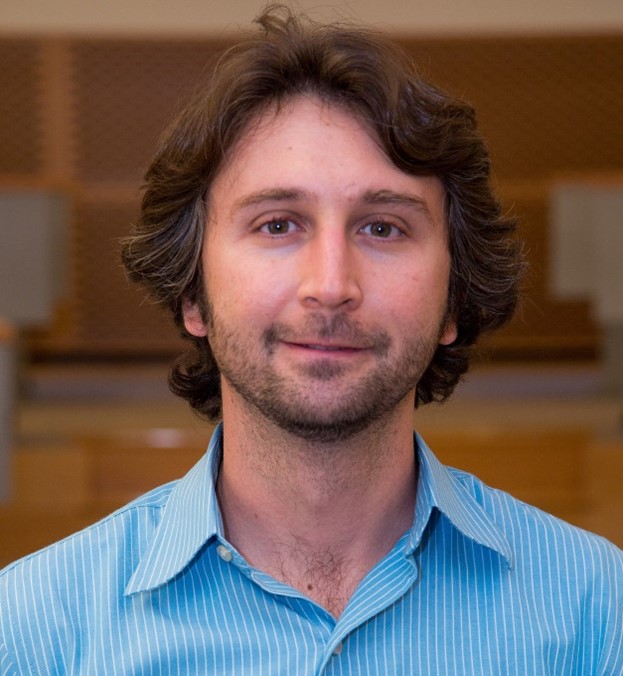 |
 |
| Emre Salman SBU, Electrical and Compuiter Engineering |
Nicholas St. John BNL, Instrumentation |
Abstract:
Custom application specific integrated circuits (ASICs) play an important role in readout systems within high-energy physics experiments. These ASICs should have high performance and efficiency, while operating in harsh environments such as high radiation and cryogenic temperatures. In existing work, the reliability of these ASICs is enhanced by adding redundancy to critical circuit blocks and/or relying on worst-case design methodology. These existing approaches are not only time consuming to implement, but also introduce significant area and power overhead. In this work, we propose incorporating embedded machine learning (ML) capabilities within one of these ASICs to autonomously boost performance in an energy-efficient manner. Specifically, our work will involve the study and implementation of embedded ML functionality within a full-duplex wired transceiver ASIC. The proposed ASIC will autonomously optimize the efficiency of the wired data link, while also detecting anomalies caused by extreme environmental conditions. When an anomaly is detected, the ASIC will correct errors without relying on traditional techniques such as redundancy and worst-case design methodology.
AI-Enabled Sparse Data Acquisition, Compression and Federated Processing
|
|
 |
| Xin Wang SBU, Electrical and Computer Engineering |
Ai Kagawa BNL, Computational Science Initiative |
Abstract:
Today, there is a large amount of big data available for analysis. Especially, the data volume produced by large-scale scientific instruments (e.g., BNL’s scientific instruments, National Synchrotron Light Source II (NSLS-II) and sPHENIX detector) is often of substantial size. The big amount of data poses great challenges for storage, transmissions and analysis. Moreover, with the advancement of mobile networks, there is a growing potential to collect data remotely and analyze data using edge computing devices. The wireless devices are often lightweight, operate on limited battery power, and need to run cost effectively. A device, such as an Unmanned Aerial System (UAS) or a drone, can serve as an edge computing device, but is constrained by the energy and transmission bandwidth. Consequently, wireless connected devices need to be lightweight in computation, and operate power and bandwidth efficiently in data acquisition and transmission. Making significant advancements in data compression algorithms is crucial to optimize real-time, high-volume 3D image analysis at the edge. The advancement from this work will greatly enhance both data analysis and data communication processes, resulting in improved performance and efficiency for edge computing.
Diamond-based Quantum Sensing for High Energy Physics Applications
 |
|
| Cyrus Dreyer SBU, Physics and Astronomy |
Joanna Zajac BNL, Instrumentation Division |
Abstract:
This project deals with the development of solid-state detectors for applications in high energy physics, mainly, for nuclear recoil registration and directional information detection systems. Here, our aim is to make proof-of- principle demonstration of directional detection using defect center-based quantum sensing in diamond. This will consist of three steps; firstly, we develop a quantitative model for events registration based on properties of defect centers. This will involve first-principles calculations based on density-functional theory (DFT) to quantitatively determine the effects of nearby displaced nuclei on the properties of defect-centers. We will then prepare diamond samples by irradiation with high energy neutrons (MeV) sources. Finally, we will use confocal microscopy for fluorescent nuclear track detection (FNTD)-type experiments to reconstruct 3-dimension maps of neutron damages.
Proton FLASH Therapy Targeting for Deep-Seated Tumors
 |
 |
| Samuel Ryu SBU, Radiation Oncology |
Dejan Trbojevic BNL, Collider Accelorator Dept. |
Abstract:
We propose to develop proton FLASH radiation therapy by using spread-out Bragg peak of proton beam for deep-seated tumors. This will bring therapeutic gain by differential enhancement of tumor control while preserving normal tissue. This study is in collaboration with the Department of Radiation Oncology in Stony Brook University (SBU) where the expertise in the focused radiosurgery is being performed clinically, and the Collider Accelerator Department from Brookhaven National Laboratory (BNL) with expertise of designing and constructing the compact magnet synchrotron to accelerate protons enough to make spread-out Bragg peak FLASH beam.
Proton therapy has been used for cancer therapy owing to the physical property, known as sharp Bragg peak phenomenon, which has near zero exit dose past the target tumor. However, biological effectiveness of proton therapy is generally similar to photon therapy. More recent evidence suggests that radiation delivery by ultra-high dose-rate ³40 Gy/second, thus called FLASH, improved tumor control with almost no toxicity to the normal tissue compared to the conventional photon or proton therapy of 1-2 Gy/min. The photon beams such as x-rays or g-rays are not able to produce FLASH beams. Technical progress with innovative permanent magnet accelerator technology made the Bragg Peak FLASH proton therapy possible. This innovative magnet technology allows protons to be accelerated on a faster cycle to give rapid energy scanning, in which the beam energy can be changed within in few msec. This allows FLASH protons to be delivered to the desired depth. It is not achievable in superconducting cyclotrons or conventional synchrotrons. The study objectives are 1) to design the permanent magnet beam lines and dynamical aperture study of the proton fast-cycling synchrotron, and 2) to test feasibility of proton FLASH therapy in human phantom and to establish the logistics of proton FLASH therapy by demonstrating the differential 3-dimentional Bragg peak FLASH dose distribution and absorbed dose between tumors and the adjacent critical normal tissue. We will use models of spine tumors with spinal cord, and pancreatic cancer as a prototype of deep-seated tumor.
Seeding a Muon Collider for the Future
 |
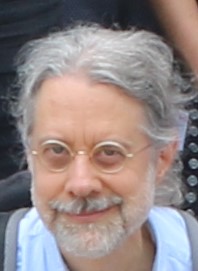 |
| Patrick Meade SBU, Yang Institute |
Scott Berg BNL, EIC |
Abstract:
This seed grant will help solidify the connection between SBU and BNL for efforts
in a potential muon collider, which was recognized by the US High Energy Physics community
during the Snowmass process as one of the most promising routes for the field. Such
a collider would represent a paradigm shift for the HEP community and requires significant
investment and R&D to come to fruition. It is anticipated that the P5 report of the
Department of Energy that will come out this year will recognize this and open future
funding opportunities that this seed grant enables. Patrick Meade has helped lead
theory based efforts for muon colliders in the past years and Scott Berg is an expert
in muon collider accelerator physics. While muon collider R&D efforts have existed
in the past, there is now a clear goal of realizing a 10+ TeV muon collider which
does not have a full reference design as of yet. Furthermore there are unique challenges
if such a collider is built in the US, which would naturally have to integrate into
the Fermilab campus. This seed grant will fund a student mostly working on the accelerator
side for designing a potential muon collider. The student primarily will work on
developing a lattice for acceleration in a hybrid pulsed synchrotron that would fit
within the Fermilab site boundaries. This is a goal more specific to future US funding
opportunities as a CERN based IMCC design has different geographical restrictions.
The student will also begin dynamic aperture studies for solenoid-based ionization
cooling lattices. The progress enabled by this seed grant will hopefully enable BNL/SBU
to be very competitive in anticipated funding opportunities.
